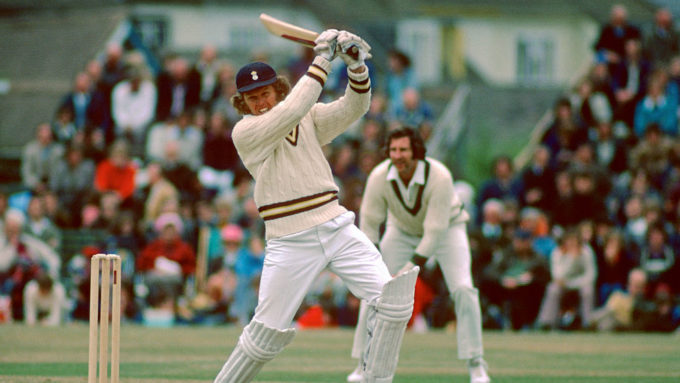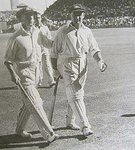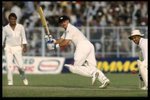NMA's 10-TEST CENTURY XI


WG Grace (2)


Glenn McGrath (0)
Glenn McGrath, a bowler it is then. A true all-timer.

Test Stats:
563 wickets in 124 matches at an average of
21.64, 28 4-wicket hauls, 29 5-wicket hauls and 3 10-wicket hauls

First-Class Stats:
835 wickets in 189 matches at an average of
20.85, 42 5-wicket hauls and 7 10-wicket hauls
"Catapulted from the outback of New South Wales into Test cricket to replace Merv Hughes in 1993, McGrath became the greatest Australian fast bowler of his time. He went on to beat Courtney Walsh's 519 wickets in the 2005 Super Test to become the leading wicket-taker among fast bowlers and his claim to the title of Australia's greatest fast man is contested only by Dennis Lillee."
"His obituary was prepared a few times - he was doubted after coming back in 2004 from ankle surgery and there were similar fears following a long lay-off to care for his wife two years later - but he wrote his own farewells. He retired from Tests at the SCG - his home ground - after Australia whitewashed England 5-0 in the 2006-07 Ashes and was adjudged the Man of the Tournament during Australia's successful World Cup campaign in 2007, his final one-day appearance."
"McGrath's USP was an unremitting off-stump line and an immaculate length. He gained off-cut and bounce, specialised in the opposition's biggest wickets - especially Atherton's and Brian Lara's - and he was unafraid to back himself publicly in these key duels. He was a batting rabbit who applied himself so intently that while playing for Worcestershire he won a bet with an Australian team-mate by scoring a fifty. The hard work eventually paid off in Tests, when he made 61, then the third-highest score by a No. 11, against New Zealand in 2004-05. Only in his occasional fits of ill-temper did he fail himself."
"He rewrote the World Cup record-books in 2003 with 7 for 15 against the outclassed Namibians, on his way to adding another winner's medal to a bulging collection. An ankle injury threatened to derail his quest for 500 Test wickets, but after briefly contemplating retirement he bounced back with yet another five-wicket haul against Sri Lanka at Darwin in July 2004. Three months later, at Nagpur, he became the first fast bowler to play 100 matches in the baggy green, and his greatness was further confirmed when knocking down the brittle Pakistanis at Perth with 8 for 24, the second-best figures by an Australian."
"Adept at picking his moments, he chose the first day at Lord's to reach 500 and his subsequent ankle and arm injuries were crucial to Australia losing the Ashes in 2005. The following summer was also painfully disrupted with the recurrence of his wife Jane's cancer, which called for immediate treatment and McGrath's full attention. He pulled out of the VB Series finals as well as tours to South Africa and Bangladesh, but he made an emphatic comeback that culminated in him taking a record 26 wickets in the 2007 World Cup."[DOUBLEPOST=1588259685][/DOUBLEPOST]
@Yash., you are next.





Shane Warne

Jimmy Anderson





